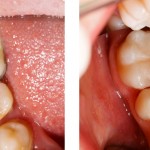
Improvements in adhesive technology, the needs to reduce the use of amalgam and increase aesthetic demands have led to greater use of tooth-colored, partial-coverage restorations to conserve dental structures. A wide range of resin or ceramic materials are currently available and a number of earlier reviews are available.
The aim of this review was to evaluate the survival rate of resin and ceramic inlays, onlays, and overlays and to identify the types of complications associated with the main clinical outcomes.
Methods
Searches were conducted in the Medline/Pubmed, Cochrane Central Register of Controlled Trials and Embase from 1983. Prospective, retrospective of randomised controlled studies relating to only resin and all-ceramic inlays, onlays, and overlays in human posterior teeth with clinical follow up were considered. Two reviewers abstracted data and assessed risk of bias. Descriptive statistical analysis, meta-regression, and meta- analysis were performed, based on the estimated survival rates.
Results
- 14 studies (1 RCT, 2 prospective and 11 retrospective cohorts) were included.
- No studies of resin inlays, onlays, and overlays were included.
- In the ceramics group, 6 studies used feldspathic porcelain and 5 used glass-ceramics with 3 studies using both materials.
- Follow up ranged from 6-20 years.
- Survival rate of the total pooled sample including feldspathic porcelain and glass-ceramics
- 5 years = 95% (95%CI; 91% -97%; I2 = 93.6%; P < 0.0001).
- 10 years = 91% (95%CI; 88% – 94%; I2 = 74.5%; P < 0.0003).
- Fracture/chipping rate of teeth and/or inlay, onlay, and overlay restorations was 4% (95% CI, 2% to 9%). [13 studies n = 106 failures out of 4,800 restorations]
- Incidence of endodontic problems was reported as 3% (95% CI, 3% to 4%) [11 studies n = 117 failures out of 3,785].
- No conclusive evidence was available on the survival of resin or crystalline ceramic materials, evaluation of color, wear, marginal integrity, postoperative sensitivity, and patient satisfaction due to the lack and/or standardization of criteria reported.
Conclusions
The authors concluded:-
This meta-analysis indicates that the survival rate of inlays, onlays, and overlays remains high, irrespective of the follow-up time (5 y and 10 y) and regardless of the ceramic material, study design, and study setting. Our results indicate that fractures remain the most frequent type of failure. The type of tooth does not seem to affect survival rates, but restorations survived longer on vital teeth. Clinicians should note that gaps in clinical evidence exist for the justification of resin composites compared with ceramics when restoring teeth with inlays, onlays, and overlays.
Comments
While this review has adopted a standard methodological approach they have chosen to adopt broad inclusion criteria and only 3 of the studies included are prospective (1 RCTs and 2 prospective cohorts). Retrospective studies are more prone to bias. The number of patients in the included studies ranged from 794 to 27 with drop out rates also varying from 0 to 25.8%. A majority of the studies (8) were conducted in a university environment the remainder in private practice. While this review suggests good clinical performance for these materials the lack of good quality prospective studies means that interpretation of the results of this review should be treated with caution.
Links
Primary paper
Morimoto S, Rebello de Sampaio FB, Braga MM, Sesma N, Özcan M. Survival Rate of Resin and Ceramic Inlays, Onlays, and Overlays: A Systematic Review and Meta-analysis. J Dent Res. 2016 Jun 10. pii: 0022034516652848. [Epub ahead of print] Review. PubMed PMID: 27287305.

Partial indirect restorations – survival rates high? https://t.co/GxiAqwgdgV
Partial indirect restorations – survival rates? https://t.co/GxiAqvYCpn
Survival Rate of Resin and Ceramic Inlays, Onlays, and Overlays? https://t.co/GxiAqvYCpn
Survival rates of partial indirect restorations? https://t.co/GxiAqvYCpn
Resin and Ceramic Inlays, Onlays, and Overlays survival rates? https://t.co/GxiAqvYCpn
Don’t miss- Partial indirect restorations – survival rates? https://t.co/GxiAqvYCpn